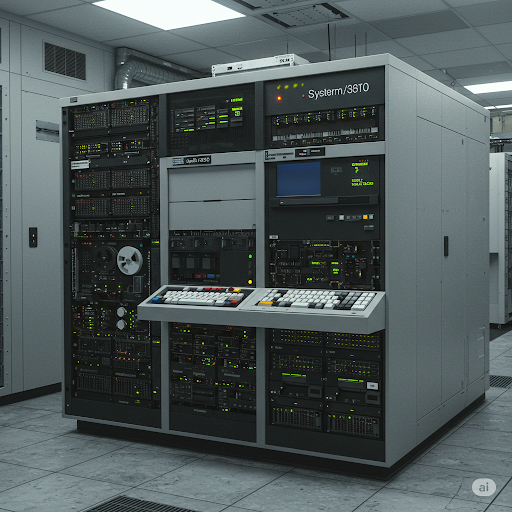
Navigating the world of NS mainframe systems can feel like steering a complex ship through uncharted waters. With their robust capabilities and unmatched reliability, these powerful machines are crucial for businesses handling massive data workloads. However, to harness their full potential, optimizing performance is key. Whether you’re dealing with slow response times or outdated processes, there’s always room for improvement. Let’s explore how you can enhance your NS mainframe’s efficiency and ensure it runs at peak performance!
Understanding the NS Mainframe
The NS mainframe is a powerhouse designed for handling vast amounts of data and transactions. Its architecture supports high availability, scalability, and security, making it the backbone of many large organizations.
One key feature is its ability to run multiple operating systems simultaneously. This means that various applications can operate without interference, maximizing resource utilization.
NS mainframes are known for their reliability. They rarely experience downtime, which is critical for businesses relying on 24/7 operations. This stability allows companies to maintain customer trust and meet service level agreements effectively.
Moreover, these systems excel in processing complex calculations at lightning speed. They are often used in industries like finance and healthcare where precision and performance are non-negotiable.
Understanding how your NS mainframe operates lays the groundwork for effective optimization strategies later on.
Common Performance Issues and Their Impact
NS mainframes, while powerful, can experience various performance issues. One common problem is high CPU usage. This can lead to slower processing times and impact user experiences.
Memory bottlenecks are another concern. When applications consume too much memory, they may crash or run inefficiently. This affects data availability and access speed.
Disk I/O latency also causes significant delays in system response time. Users often find themselves waiting longer for queries to execute or reports to generate, which can frustrate operations.
Network congestion shouldn’t be overlooked either. A saturated network impacts communication between the mainframe and other systems, leading to unreliable data transfers.
These performance issues not only hinder productivity but can also increase operational costs due to inefficient resource utilization. Identifying these problems early is crucial for maintaining an effective NS mainframe environment.
Best Practices for Optimizing NS Mainframe Performance
To enhance NS mainframe performance, start by fine-tuning your workload management. Prioritize critical tasks and distribute resources efficiently to reduce bottlenecks.
Next, consider optimizing your input/output operations. Streamlining these processes can lead to significant speed improvements. Use efficient data access methods to minimize latency.
Regularly monitor system performance metrics. Keep an eye on CPU usage, memory allocation, and disk I/O rates. Identifying trends helps pinpoint potential issues before they escalate.
Implementing caching strategies can also yield benefits. By storing frequently accessed data in memory, you can decrease retrieval times significantly.
Train your team on best practices for mainframe operation. A knowledgeable staff is crucial in maintaining high-performance standards across all systems.
Managing Data Storage and Retrieval
Effective data storage and retrieval are crucial for the optimal functioning of your NS mainframe. An organized approach can significantly enhance performance.
First, consider implementing tiered storage solutions. By categorizing data based on usage frequency, you ensure that high-demand information is readily accessible while less critical data resides in slower, cost-effective storage.
Next, utilize indexing techniques to streamline access. Properly indexed databases allow for faster searches and quicker response times during operations. This minimizes delays that could impact overall system efficiency.
Regular audits of stored data also play a vital role. Routine assessments help identify redundant or obsolete information that can be archived or deleted, freeing up valuable resources.
Adopting efficient backup strategies ensures data integrity without sacrificing performance. Automated backups reduce manual workload and maintain consistency across systems while safeguarding against potential losses.
Utilizing Automation Tools to Improve Efficiency
Automation tools play a crucial role in enhancing the efficiency of your NS mainframe. These advanced solutions streamline repetitive tasks, allowing your team to focus on more strategic initiatives.
By implementing automation, you can reduce human error and improve accuracy across processes. Automated workflows ensure consistency, which is vital for maintaining system integrity.
Many modern automation tools come equipped with analytics features that help monitor performance metrics. This data-driven approach enables quick adjustments to optimize operations further.
Additionally, integrating automation into your NS mainframe environment supports scalability. As demand fluctuates, these tools can adapt without requiring significant manual intervention.
Investing in the right automation software not only boosts productivity but also enhances resource allocation within your organization. The result is a more agile infrastructure that meets business needs effectively.
Regular Maintenance and Updates
Regular maintenance is key to ensuring your NS mainframe runs smoothly. It involves routine checks and updates that prevent minor issues from escalating into major problems.
Start by monitoring system performance metrics regularly. Identify any anomalies early on. This proactive approach can save time and resources in the long run.
Applying software patches is another critical aspect of maintenance. Keeping your systems up to date ensures you benefit from the latest security enhancements and functionality improvements.
Don’t overlook hardware checks either. Over time, components may wear out or become inefficient. Schedule inspections and replace parts as needed to maintain optimal performance levels.
Documenting all maintenance activities creates a valuable resource for troubleshooting future issues, enhancing overall system reliability.
Conclusion
When it comes to optimizing your NS mainframe performance, understanding the architecture and common pitfalls is crucial. By recognizing the issues that can arise, you can take proactive steps toward enhancing efficiency. Implementing best practices tailored to your specific environment will make a significant difference.
Managing data storage and retrieval effectively is essential for maintaining speed and reliability in operations. Automation tools provide a fantastic way to streamline processes, minimizing human error while maximizing productivity.
Regular maintenance and updates are vital components of any optimization strategy. Keeping your system current helps shield against vulnerabilities and performance lags.
Achieving optimal performance on an NS mainframe requires commitment and ongoing effort. Embracing these strategies not only improves functionality but also sets the stage for future growth and innovation within your organization.
RELATED POSTS
View all


